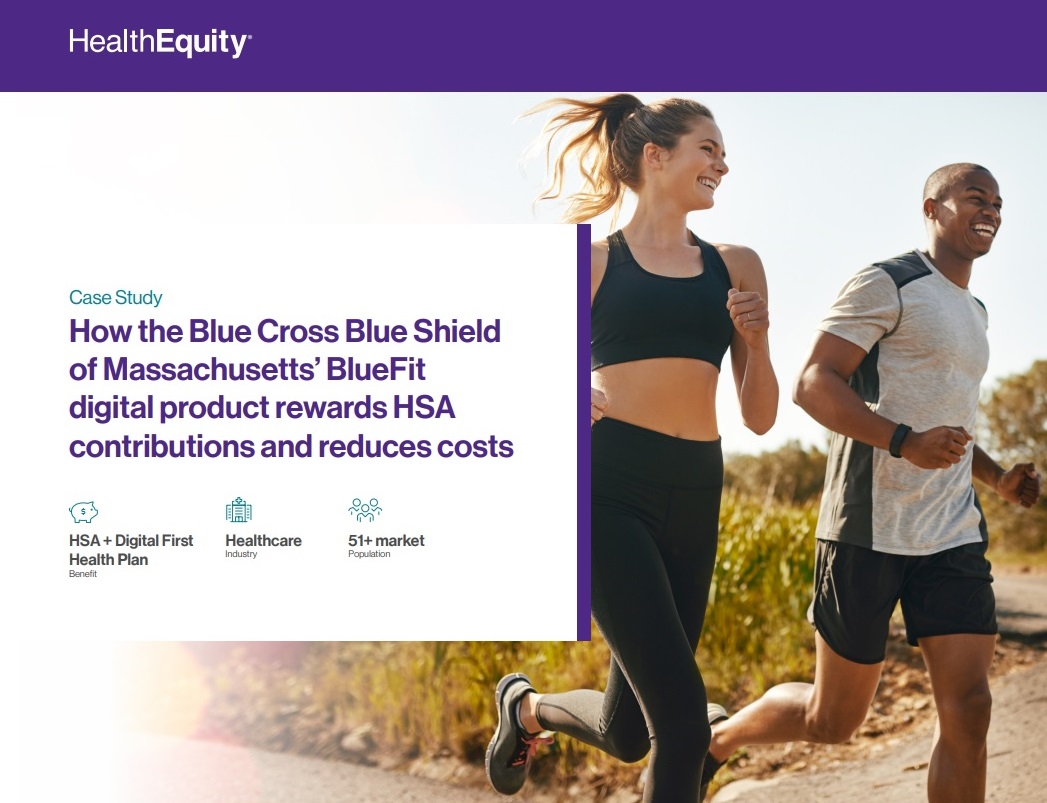Blue Cross Blue Shield of Massachusetts (Blue Cross) created BlueFit, a consumer-directed health (CDH) plan to provide comprehensive coverage through a digital experience where 95% of subscribers have earned an incentive. BlueFit is designed around a Health Savings Account (HSA) and rewards members for making progress on health, wellness, and financial literacy goals.
See how collaboration and technology innovation launched a next-generation product to immediately engage members, generate annual overall cost savings for customers, and boost financial wellness. To date, 100% of employers contribute to subscribers’ HSAs and the average cash balance of the new, first-year HSA is $1,105, about 20% higher when compared to average first-year cash balances of HealthEquity members.
Innovative health plan engages digitally-savvy members while containing costs
Blue Cross Blue Shield of Massachusetts (Blue Cross) understood they had an opportunity to create a medical plan to match the era of rapid digital growth. It was clear that subscribers’ technical experience expectations were changing. Customers now expect a wide range of smartphone and tablet functionality in their healthcare plans and benefits. And, at the time of product development, healthcare costs were on the rise along with inflation—squeezing both employers and consumers.
In addition to responding to those pressures, Blue Cross wanted to bridge the health plan literacy gap where, according to HR Morning, 35% of employees claim to not fully understand the benefits they selected during open enrollment. Helping members know how to use their benefits and reduce confusion typically seen in the first year of a consumer-driven health plan would be essential to meet the cost saving goals.
Grounded in data to save on premiums and provide innovative account features
Blue Cross discovered they needed a technologically advanced solution to help employers reduce costs while elevating benefits for employees.
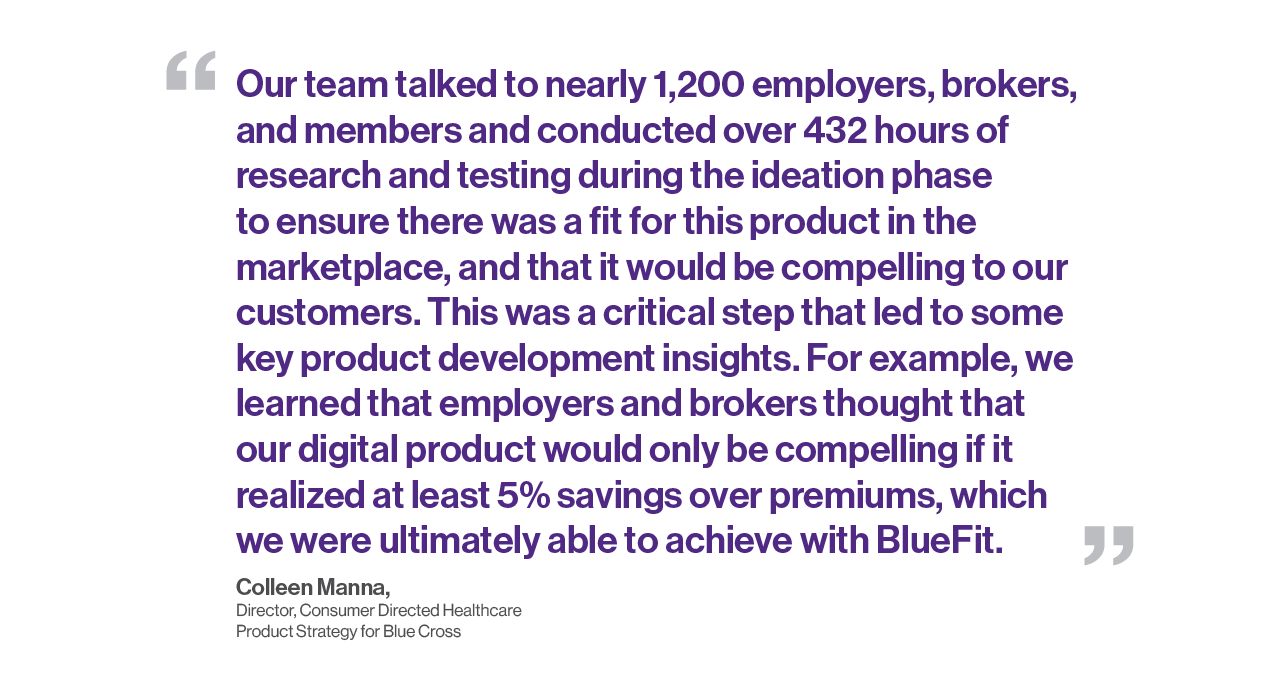
Stakeholder interviews proved to be invaluable. Employers’ and brokers’ feedback centered around cost savings, while members requested specific account features to enable them to see account balances and multiple transactions. Plus, members pointed out items they would like to see in an interface as well as bundled medical benefits and features, like access to categories like dental, telemedicine, and more.
By the end of the focus groups, the idea took shape to offer a digitally enabled solution. The detailed requirements gave Blue Cross an achievable vision to create a product where members could access claims, balances, virtual appointments, and incentives earned all in one place. Collaboration with HealthEquity in joint ideation sessions brought the vision to life. HealthEquity took in the requirements for the Health Savings Account (HSA) component and used technical specifications to make it happen. This included involving HealthEquity team members proficient with application programming interfaces (APIs) to ensure a high degree of functionality and seamless information exchange between the applications.
Blue Cross worked with HealthEquity to create a new incentive-based product design that would:
-
Engage users and drive desired behaviors of digital connection and HSA contributions
-
Center around an HSA to help members pay for care now and in the future
-
Help improve members’ financial and health plan literacy with respect to knowing how to make the most of their benefits
-
Result in meaningful savings for both employers and members
By the end of 2021, BlueFit, a next-generation health plan, was created and ready to be released.
BlueFit provides comprehensive medical and mental health coverage in a convenient digital environment
Launched in 2022, BlueFit bundles benefits with an HSA from HealthEquity and incentives to spur real-time engagement. The digital experience solved the pain points from members lacking convenience and visibility to their account. And the plan design ticked the boxes of cost savings for both employers and members. Lastly, the built-in incentives achieved the need to drive engagement and make progress on health plan literacy goals.
Blue Cross emphasizes the importance of the automatic contribution feature. Dollars earned from completing tasks in BlueFit are funded by Blue Cross and automatically contributed into the subscribers’ HSA. Because subscribers don’t get a check or debit card to spend that incentive, it creates automatic savings into their HSA.
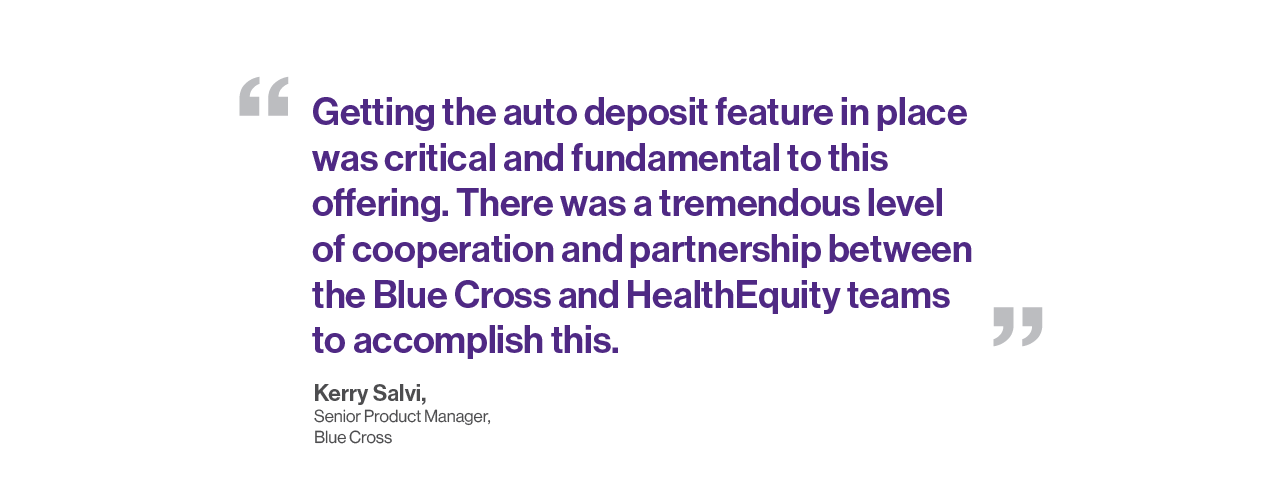
Prior to BlueFit, members could only see their balance online. In the new BlueFit plan, subscribers can see their balance, plus the last five transactions including incentives earned. Members can also see that information in the HealthEquity portal, so there are many ways to give subscribers seamless convenience and visibility to key aspects of their account.
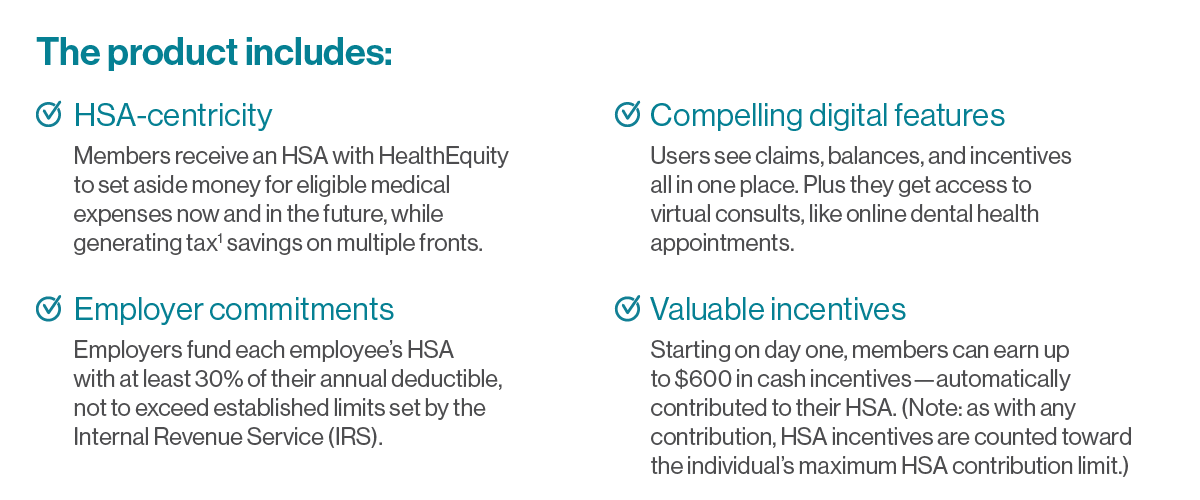
The innovative BlueFit features are a product of the Blue Cross and HealthEquity teams’ fresh thinking through technical requirements. The two organizations also partnered on an operational side to ensure Blue Cross received the level of reporting they needed to understand how individual components performed.
“The HealthEquity team helps us dig deep and think creatively to ensure we have the data we need to understand how the solution is performing,” affirmed Manna.
Joint communication efforts spread BlueFit awareness and adoption
Once developed, the BlueFit rollout began with training and updates to brokers to introduce the materials. During open enrollment, the team leveraged microsites called Benefits at Blue. For those employers offering BlueFit, members saw the plan as an option while selecting their benefits. To provide further awareness of the new plan, HealthEquity and Blue Cross developed joint communications to include in the welcome kit and on the MyBlue website.
“From a tactical perspective, working together on coordinated materials was very helpful to reinforce specific topics,” said Manna. “HealthEquity deployed campaign communications in the member portal message center, and we added complementary alerts in the Blue Cross campaign for members.”
BlueFit yields significant progress in helping members develop savings and understand their benefits
While complete results won’t be available until the beginning of 2023, initial results are promising. Blue Cross views the significant interest in earning the incentives as a positive. Likewise, among the eligible population, there is significant adoption across the board for the full suite of available tools and resources.
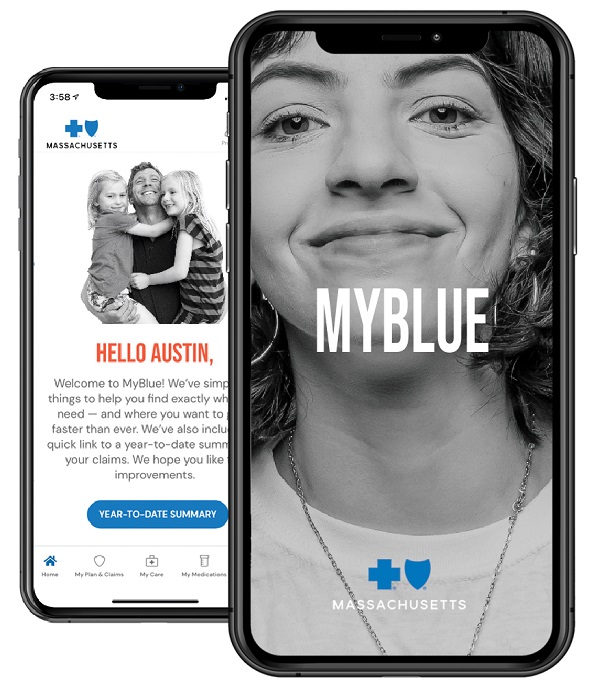
“We see relatively quickly that employees go online to add their contact information to their profile in the MyBlue member portal to earn $100,” said Salvi. “That’s an important milestone because it’s a digital product and the goal is to use text and email messaging to communicate with those individuals.”
Key metrics within the first year of performance include:
-
95% of subscribers earned an incentive, with an average incentive amount of $130 across all subscribers
-
Greater than 50% of subscribers earned an incentive for digital engagement
-
The average cash balance of the new, first-year HSA is $1,105, about 20% higher than average first-year cash balances of HealthEquity members
-
And over 5% of accounts have a balance of more than $5,000, which is +1.5% above the general population of HealthEquity members
-
Subscribers achieve average scores of 68 (compared to a benchmark score of 38 for HealthEquity members) in using the HealthEquity HSA Optimizer tool, which explains the value of an HSA.
With 95% of subscribers completing tasks to earn incentives, the results are very close to the 100% participation rate the BlueFit team hoped to achieve. The team is now working toward increasing the number of subscribers who complete tasks to earn the incentives.
But that’s not all. Compared to typical results for HealthEquity members, looking at the entire BlueFit program year-to-date, which includes subscribers who previously had an HSA before joining the program, early results show:
-
The average employee contribution of $1,623 is approximately $500 above average
-
100% of employers contribute to the subscriber HSAs, nearly +25% above average
-
And the average employer contribution of $1,081 is about $250 above average
[Note: BlueFit and HealthEquity data collected from January 1, 2022 to November 15, 2022.]
It’s clear to Blue Cross the HSA contribution incentive is one of the most popular items to earn. The company sees members actively contributing funds into their HSA to earn the incentive soon after selecting the product. It’s this aspect of the BlueFit product that HealthEquity Founder and Vice Chairman, Dr. Steve Neeleman, celebrates, especially as it helps the members better spend and save their healthcare dollars.
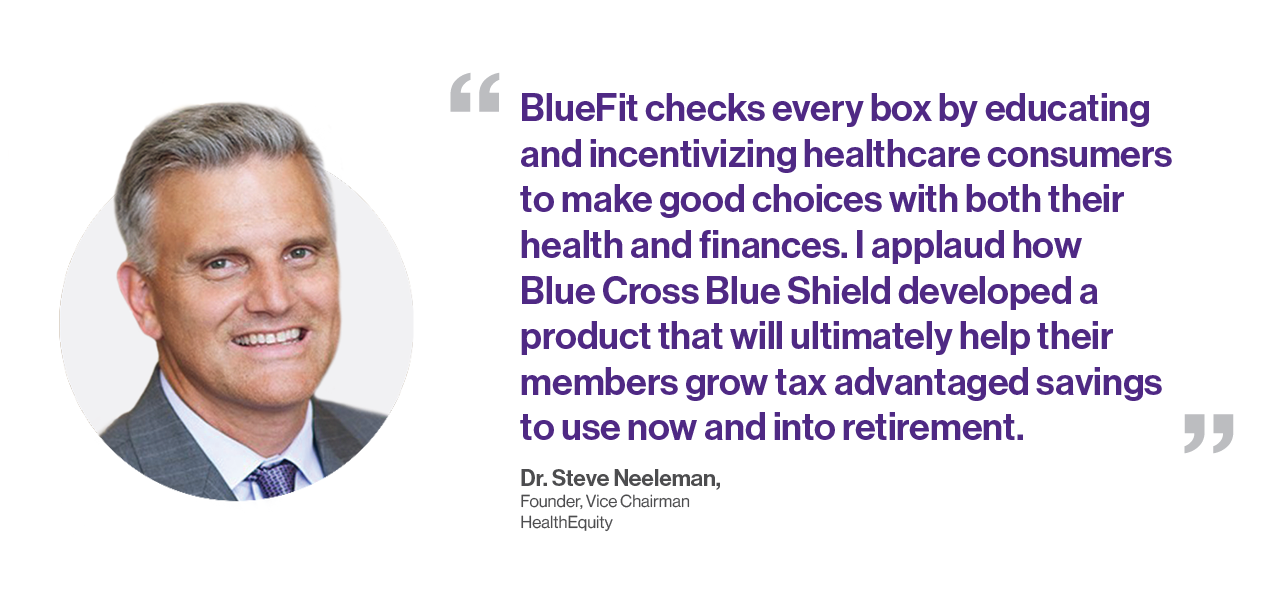
Collaboration makes a difference
Blue Cross emphasized the level of commitment HealthEquity account teams had to keep the relationship strong and to continually find new approaches to improve the experience for BlueFit members.
“I can’t underscore enough how critical it is to have a leader on our side who can think creatively with us to solve problems. That critical thinking will help us continue to develop new APIs and features as we move forward with BlueFit and other products,” said Manna.
HealthEquity credits the early success of the BlueFit launch to the tenured partnership with Blue Cross. “The BlueFit team, and the larger organization, kept a laser-like focus on the customer experience and demonstrated fresh thinking with their idea to reward subscribers financially by contributing to their HSA,” reinforced Takara Priestley, Vice President Strategic Partnerships at HealthEquity. “It has been energizing to reengineer existing technical capabilities at HealthEquity to support, promote, and expand a medical product as innovative as BlueFit.”
What’s next for BlueFit
Later in 2023 and into 2024, Blue Cross will see the full picture of results to understand the level of success and determine if any BlueFit components, like the automatic HSA contributions, would make sense to align with other plans in their offering. They’ll gather feedback from employers, including assessment on whether employers kept their commitment to deposit 30% of the deductible into each subscriber’s HSA. Blue Cross will also explore whether they can offer a version of BlueFit to other segments of their member population.
Learn more about custom solutions
Employers and health plans interested in creating a digital HSA solution can contact HealthEquity. Reach out to our team at 866.855.8908 and we’ll help you find the best strategy available.
HealthEquity does not provide legal, tax, financial or medical advice. Always consult a professional when making life-changing decisions.
1HSAs are never taxed at a federal income tax level when used appropriately for qualified medical expenses. Also, most states recognize HSA funds as tax-deductible with very few exceptions. Please consult a tax advisor regarding your state’s specific rules.

